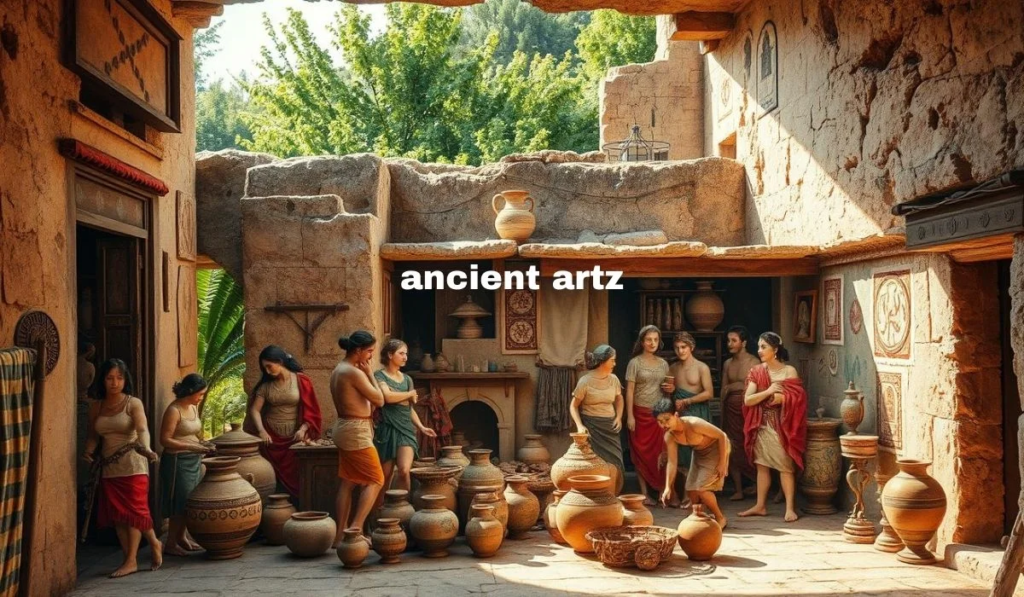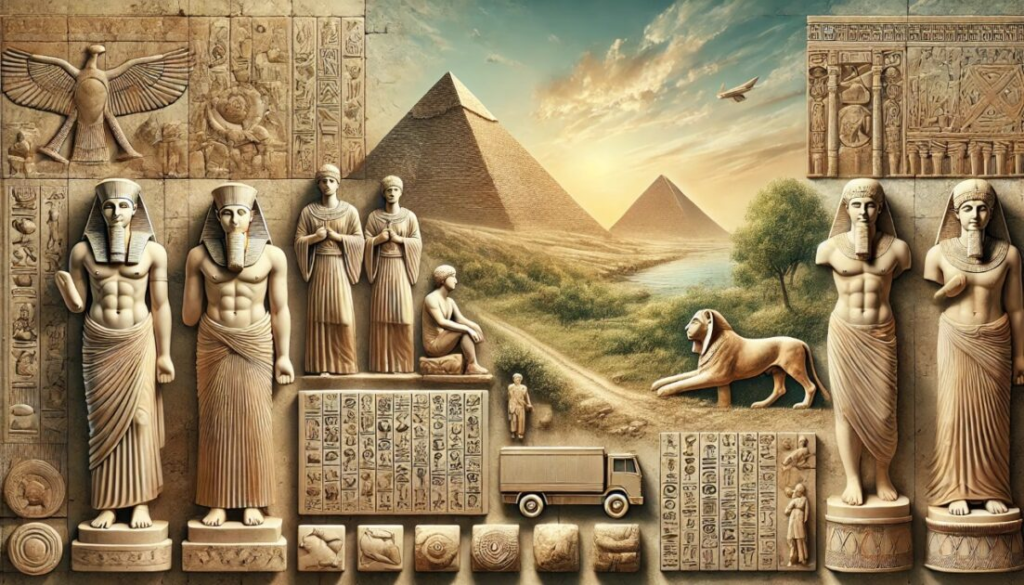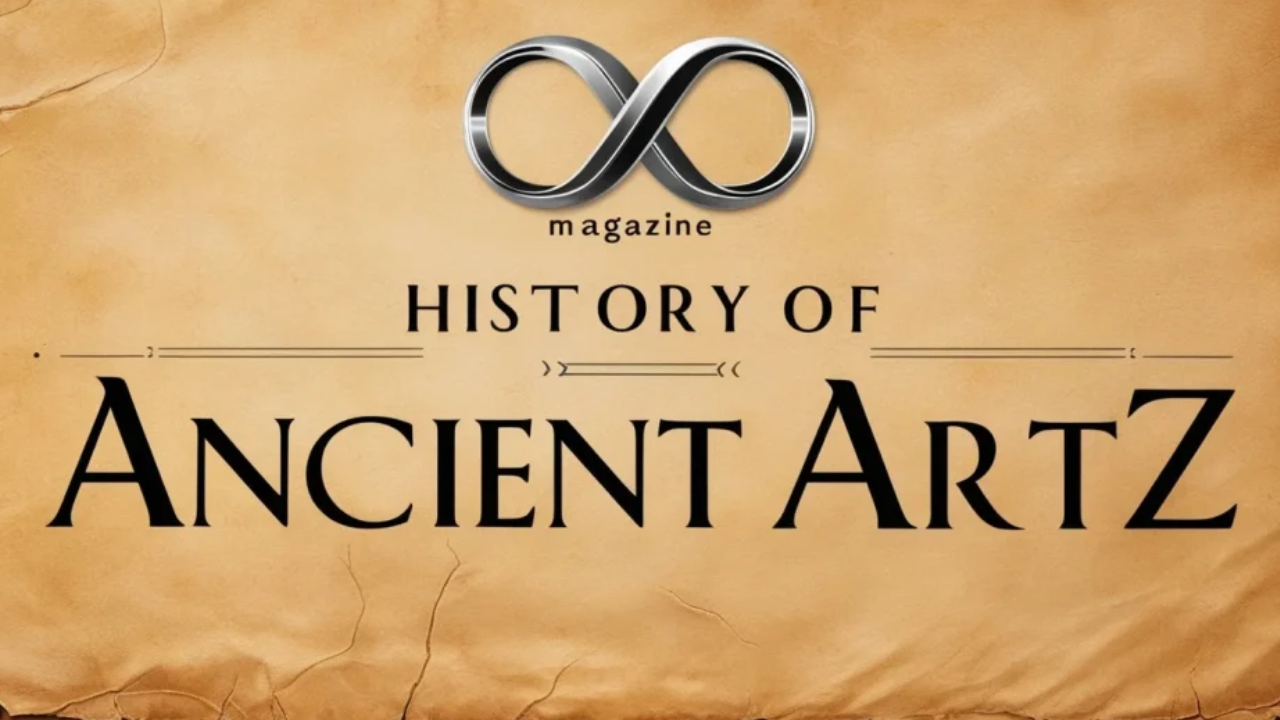Art has been an integral part of human civilization, reflecting our beliefs, values, and experiences throughout history. Among the myriad forms of artistic expression, ancient artz stands out as a profound testament to the creativity and ingenuity of our ancestors. From cave paintings to monumental sculptures, Ancient Artzprovides a unique window into the cultures that created them, helping us understand their social structures, religious beliefs, and everyday lives. This article delves into the timeless beauty of Ancient Artz and its significance within the broader context of culture.
The Origins of Ancient Artz
Ancient Artz dates back to prehistoric times, with some of the earliest examples found in the form of cave paintings in regions such as Lascaux in France and Altamira in Spain. These artworks, created around 30,000 to 10,000 BCE, depict animals and human figures, suggesting that early humans had a deep connection to their environment and relied on visual storytelling for communication.
As societies evolved, so did their artistic expressions. Ancient civilizations, such as the Egyptians, Greeks, and Romans, produced a wealth of art that was not only aesthetically pleasing but also rich in meaning. Each culture had its unique style and techniques, influenced by geography, religion, and societal structure. For instance, the Egyptians used hieroglyphics and specific artistic conventions to convey their beliefs about the afterlife and the divine.
The Role of Religion in Ancient Artz
Religion has played a pivotal role in shaping Ancient Artz. Many artworks served as expressions of devotion, meant to honor deities and reflect the spiritual beliefs of the culture. In ancient Egypt, for example, the construction of monumental temples and tombs was integral to their religious practices. The Great Pyramids of Giza, built as tombs for pharaohs, are not only architectural marvels but also serve as symbols of the Egyptians’ belief in the afterlife.
Similarly, in ancient Greece, art was deeply intertwined with religion. Temples dedicated to gods like Zeus and Athena were adorned with intricate sculptures and reliefs that depicted mythological stories. The Parthenon, a masterpiece of classical architecture, showcases the Athenians’ devotion to Athena and their artistic prowess.
In contrast, ancient Mesopotamian art, exemplified by the ziggurats, reflected a more utilitarian approach. These massive structures served as temples, but their design also demonstrated the civilization’s advanced engineering skills and their belief in the importance of urban life.

Cultural Identity and Expression
Ancient Artz is a powerful means of expressing cultural identity. It reflects the values, beliefs, and practices of a society, providing insight into their way of life. The distinct styles of pottery, sculpture, and painting that emerged in various ancient cultures showcase their unique identities.
For instance, the vibrant pottery of the Minoan civilization on Crete is characterized by its intricate designs and vivid colors, often depicting marine life and natural elements. This artistic style not only reflects the Minoans’ connection to the sea but also signifies their cultural values, which celebrated nature and beauty.
In contrast, the harsh lines and geometric patterns of ancient Greek pottery convey a sense of order and symmetry, embodying the Greeks’ pursuit of balance and harmony. The famous red- and black-figure vases illustrate scenes from mythology and daily life, allowing us to glimpse the cultural priorities of the time.

The Influence of Ancient Artz on Modern Culture
The impact of Ancient Artz extends far beyond its historical context; it continues to influence contemporary culture in myriad ways. Modern artists draw inspiration from ancient techniques, styles, and themes, often reinterpreting them to resonate with today’s audience. For example, the use of symbolism in ancient art can be seen in modern abstract and conceptual art, where visual representations are imbued with deeper meanings.
Moreover, Ancient Artz plays a crucial role in education and cultural preservation. Museums around the world curate collections of ancient artifacts, allowing people to connect with history and appreciate the artistic achievements of past civilizations. Educational programs that focus on ancient art encourage critical thinking and foster a deeper understanding of cultural heritage.
In literature, ancient myths and stories have inspired countless works, enriching the cultural landscape with narratives that explore universal themes of love, conflict, and morality. The enduring relevance of these stories speaks to the timeless nature of Ancient Artz and its ability to transcend generations.

Preservation and Challenges
Despite its significance, Ancient Artz faces numerous challenges in terms of preservation and conservation. Many ancient artworks have suffered from the ravages of time, natural disasters, and human activity. Efforts to conserve and restore these works are vital to ensuring that future generations can appreciate their beauty and cultural importance.
Organizations and institutions dedicated to the preservation of Ancient Artz play a crucial role in safeguarding these treasures. Techniques such as controlled environment storage, restoration, and documentation are employed to maintain the integrity of these artworks. Additionally, awareness campaigns emphasize the importance of protecting cultural heritage, encouraging communities to take an active role in preservation efforts.
Conclusion
The beauty of Ancient Artz lies not only in its aesthetic appeal but also in its ability to convey the rich tapestry of human experience. It serves as a bridge connecting us to our ancestors, offering insights into their beliefs, practices, and cultural identities. As we continue to explore and appreciate ancient art, we gain a deeper understanding of the diverse cultures that have shaped our world.
In an age where technology often dominates our lives, the timeless nature of Ancient Artz reminds us of our shared humanity and the creative spirit that transcends time. By valuing and preserving these artistic treasures, we ensure that the legacies of ancient cultures endure, enriching our understanding of the past and inspiring future generations.
